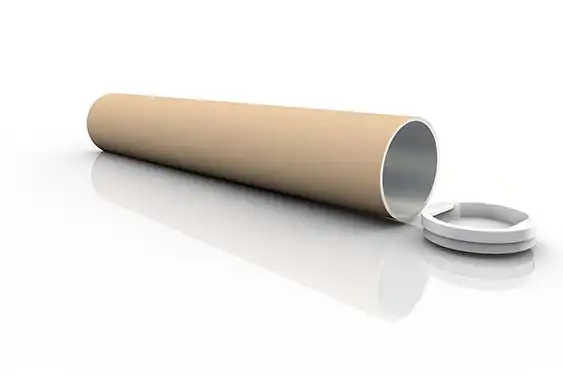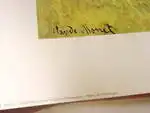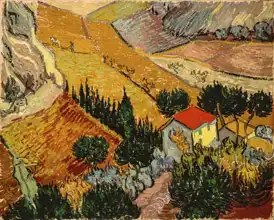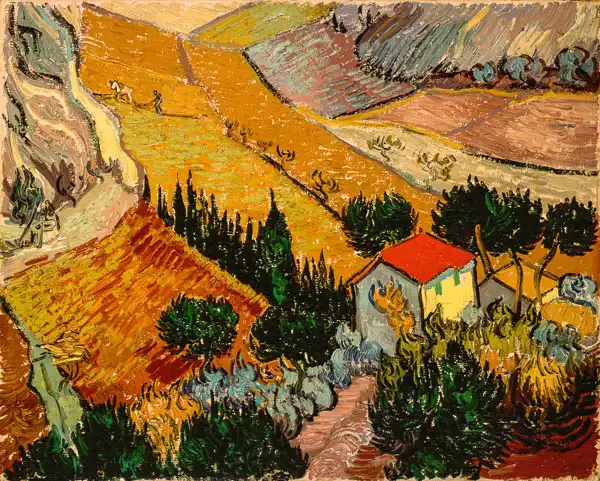About this finishing
Print. The image is printed on the top quality 10-ink HP Z9PS printer on HP matte 270 g / m2 paper. You can choose any size to an accuracy of 1 cm. A margin of 5 cm around the image is added to the size of the motif.


You can find a detailed description about our finishings
here.
Landscape with House and Ploughman
"Landscape with a House and a Plowman" (sometimes also called "Landscape with a Plowman and the Sun") is an oil painting painted by the famous
Dutch painter Vincent van Gogh in 1889, during his stay in the south of France, in the city of Saint-Rémy-de-Provence, when he was in a mental health facility.
This painting depicts a typical rural motif with an ornate house, a field and a ploughman. The painting depicts the
of southern France, which was particularly inspiring for
van Gogh . We observe a wide open field where plowing is taking place. In the foreground of the picture stands a
building , which is a typical country house of this region. Its yellow color and distinctive roofs attract attention. In the foreground of the painting we can see a plowman with two horses plowing a field. The figure of the plowman is shown in motion, adding to the impression of activity and rural life. There is a big sun above the horizon. This sun is one of the prominent elements of the painting and adds an impression of warmth and light. Van Gogh used short, visible brush strokes, which is characteristic of his artistic style. This technique adds a sense of movement and texture to the image.
Prevailing color of this fine art print is yellow and its shape is landscape. This image is printed on demand - you can choose material, size and finishing.
Vincent Willem van Gogh (1853-1890). Dutch painter belonging to
Post-Impressionism. His paintings (some 900 paintings and 1,100 drawings and sketches) are among the most famous in the world and are sold for exorbitant sums (except for those in our shop).
Parisian Impressionists He lived in Paris from 1886 and was influenced by the use of bright colours - most of his works were painted during this period. In his paintings, Gogh uses contrasting colours (often blue and orange - he said that I want to use colours other contrasts to each of them shone even more to contrast a man and a woman). He was known for his excesses and amputated an ear after the break-up of his friendship with
Gauguin. There is a lot of speculation about this incident (he possibly suffered from heavy metal poisoning from paint that had caused mental problems). In 1890, unfortunately he committed suicide.


